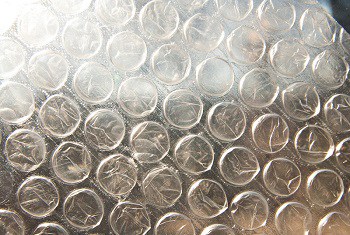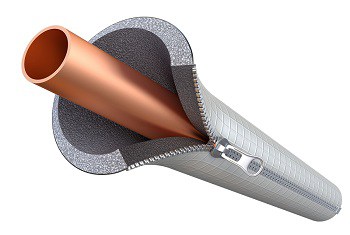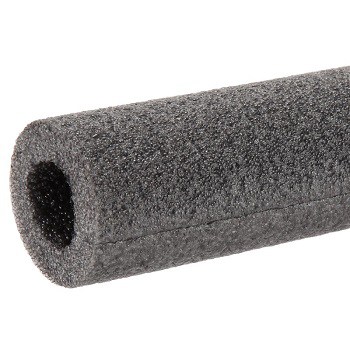Pulling into your garage you notice a dark spot on the floor by your water softener. You get out of your car and see a puddle of water on the floor and your water softener looks like it just ran a marathon on a hot humid day. Its condensation, and plenty of it.
You can prevent condensation from forming on a water softener by creating a thermal barrier between the surface of the water softener and the humidity in the air that can come in contact with it. Insulating the surface will create a barrier that will inhibit condensation from forming.
There are several ways to decrease or even eliminate condensation on your home’s plumbing, follow these steps, and you should be very happy with the results.
Properly insulate your water softener tank to prevent condensation.
A water softener tank is basically just a large piece of pipe that contains water softening resin in it to remove hard minerals from water.
Because cold water is running through your water softener whenever you use water, condensation can occur the same way as it occurs on your home’s cold water pipes.
Using a properly sized neoprene water softener jacket around the tank of your water softener tank along with insulating your pipes going into and out of your water softener, can greatly reduce the chance of condensation developing.

In some cases where condensation is very bad, using (large-sized bubble seems to work best) plastic bubble wrap (the type normally used for protecting fragile items for shipping, and is really fun to pop with your fingers) in addition to a neoprene water softener jacket is very effective.
The idea behind using the neoprene jacket first, and then wrapping the jacket with plastic bubble wrap is to create two levels of a thermal barrier.
How does bubble wrap stop condensation on a water softener?
The outside bubble wrap contains large air pockets to help separate the cold temperature of the pipes from the warmer room temperature, and since the temperature on the inner side of the bubble wrap will be cooler than the room temperature, the barrier that the neoprene jacket will be more effective in preventing condensation on the water softener tank.
Wrapping the bubble wrap 1-2 times around the water softener tank should be plenty to create a thick and effective thermal barrier, wrapping the tank more than a few wraps will generally not be more effective, and would be difficult to do.
Are 2 neoprene jackets better than one for stopping condensation on a water softener?
Using multiple neoprene jackets on top of one another may work better than just using a single one, but this will not create as good of a barrier as the larger air pockets found in the large bubble, bubble wrap.
Also, there will be little air circulation between the two jackets which can encourage the growth of mold and mildew. If you do wish to use multiple neoprene jackets, I highly recommend that you remove and clean them at least once a year.
If you live in an area where there is a considerable change in temperature and humidity during the year, you will want to remove the bubble wrap and neoprene jacket during the colder seasons as mold may grow underneath them.
I recommend removing both bubble wrap and neoprene jackets at least once per year to clean the water softener tank, jacket, and bubble wrap with an anti-mold and mildew cleaner.
I found this mold and mildew cleaning kit on Amazon which does the job perfectly. And if you have a power drill, this drill cleaning brush does a great job of deep cleaning neoprene and bubble wrap.
Use a mold and mildew cleaner to clean both sides of the jacket and bubble wrap, allow them to dry thoroughly and then replace them when the temperatures and humidity start to rise.
If you have a musty or moldy smell where your water softener is, try these Bamboo Charcoal air freshening bags that I found on Amazon, they are rated very well and should take care of that awful smell.
Properly insulate your cold water pipes.

Many people think that just putting pipe insulation covers on their water pipes will cure their pipe condensation problem. But if you are putting the insulation on the pipes incorrectly, it may not be very effective.
The whole idea of putting pipe insulation on your cold water pipes is to create a temperature barrier between the cold water pipe and the humidity in the air surrounding the pipe.
If you put pipe insulation on your pipes but leave gaps where the pipe is exposed, condensation will still occur on the exposed piping. You must install pipe insulation over the entire pipe to ensure a complete barrier.
Also if you use the wrong size pipe insulation or put it on too tightly, there can be gaps created between the insulation and the pipe.
Taping the insulation too tightly will pinch the insulation where the tape is, but it can push the insulation away from the pipe where there is no tape. Try pinching a small piece of foam between two fingers and see how the ends of the foam tend to turn up or down.
Use the correct sized pipe insulation and cut the corners at a 45-degree angle to ensure a snug (but not over tight) fit where the plumbing makes a 90-degree turn.

I found these well-priced pipe insulating covers on Amazon. Select your correct pipe size (3/4″ or .75″ is most common) and be sure to install them properly.
Measure the lengths that you will need and cut the insulation neatly so that the pieces of insulation meet up cleanly without gaps or bulges.
Don’t stuff or press the insulation tightly into corners or gaps if possible, take a little time to insulate your pipes neatly and the insulation will work more effectively.
Fix any leaks or moisture issues.
If you have any areas where rain or other water can get into the area where your water softener is, this will create more humidity, and therefore more condensation.
Seal gaps in walls that expose the area to the outdoors or other rooms where the humidity may be high. Repair any leaks in your plumbing that may be leaving deposits of water that will contribute to the humidity in the area.
Using a dehumidifier works great to stop condensation on a water softener!
Ideally, a dehumidifier is extremely effective at eliminating condensation as it removes the very cause of the condensation.
If you can, use a high volume dehumidifier in the area, making sure that the area is sealed off from other areas, and hook up a drain line from the dehumidifier to a floor drain or have it drain directly outside to an open area where the drain line will not freeze during cold weather.
Check for unnecessary water usage.
The colder the pipes, the more likely there will be condensation. If you have a toilet that continues to run (even just a small amount), the water in your pipes will not have any chance to warm up.
Any time that cold water is flowing through your pipes, the condensation will be greater.
Check around your home for running toilets, dripping faucets or outside spigots that don’t quite shut off completely, this may not sound like a big deal, but it can greatly affect condensation developing on your plumbing.


Paul Hi….. Ok, I have an Aquasana salt free water softener, I’ve had it for about 4 years now. For the last 3 years I was not able to go into my basement. However, I recently was down in the basement and found some huge mushrooms growing all around the Aquasana unit, freaked me out. Their service people weren’t very helpful….their unit shape is much different than what I see of the competitors, can’t find a neoprene sleeve that would fit…… So I’m wondering what your thoughts are on my building a wooden box around the unit, something around 4-6″ larger than the unit, and then, use insulation foam spray to fully insulate the unit (this is just the bottom half) ???
Hello Mr. Frigault and thank you for the question.
Before you go through all the work of building a box around the system, I recommend cleaning your water conditioner thoroughly and then using plastic bubble wrap to create a thermal barrier around the tank and using a dehumidifier in the area where the system is.
See “Why is my water softener sweating”
A salt-free water conditioner will not condition your water forever. Unlike a water softener that uses sodium ions to regenerate its water softener resin so that it can actually soften your water for many years, a salt-free water conditioners media will need to be changed after a few years and if the tank is in a box and surrounded by foam, it could make this very difficult to do.
I recommend using 2-4 wraps of bubble wrap and then using a dehumidifier.
I hope this was helpful.
Paul